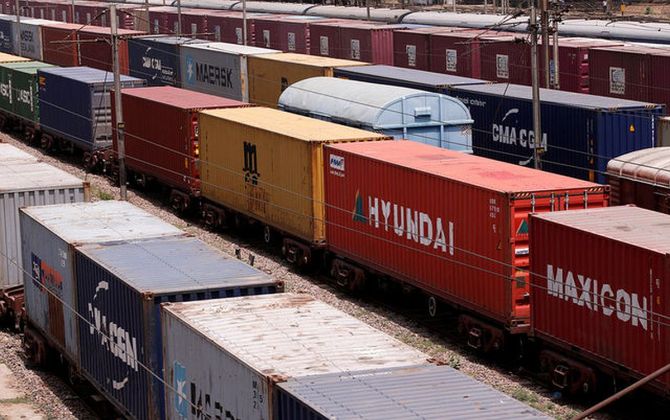Experts say the ministry should target unconventional sectors more aggressively.

Indian Railways has managed to improve its freight volumes each year since the pandemic.
However, its inability to add new industries and goods will pose a challenge for the national transporter in the wake of it setting an ambitious target of 45 per cent share in the national logistics by 2030.
According to officials, the ministry of railways achieved 114 million tonnes (mt) of miscellaneous goods (classified as balance and other goods) in 2023-24.
This is 11.6 per cent lower than the previous financial year.
It is the only commodity class (barring foodgrains, affected by budget and procurement), which saw a reduction over the previous year.
This comes after the railways saw back-to-back double-digit growth in miscellaneous goods ever since FY21.
With industrial output and gross domestic product (GDP) growing over 8 per cent, the railways should be targeting unconventional sectors more aggressively rather than lose market share, according to experts.
“We have not been able to capture new territories.
"While container traffic is meant for export-import of goods, it does not cover domestic logistics.
"Balance and other goods falling by 11 per cent means that the railways is losing share to road transport in domestic supply chains,” said Lalit Chandra Trivedi, former general manager of East Central Railway.
Consumer segments such as automobiles, e-commerce cargo, and dairy are moved through this segment.
And, the railways has been introducing various special schemes, such as trucks on trains, to capture these markets.
It is moving away from its image of being only a raw materials transporter.
“Rail routes on key areas like Odisha and Chhattisgarh are still congested with a capacity over-utilisation of close to 130-140 per cent,” Trivedi said.
“Interest in the sector is probably at an all-time high, due to rising environmental, social, and governance compliances and monitoring of carbon emissions by corporates.
"But unless the railways can match road transport in terms of making wagons immediately available after an order is placed, or minimising delays, it will continue to lose its share,” another former railways official said.
On its part, the railways invested significantly in track expansion over the last four years.
About 5,300 kilometres (km) of new tracks have been commissioned in FY24, Union Railway Minister Ashwini Vaishnaw said in a social media post.
“Compared to 5,241 km during 2022-23, average daily track laying (in FY24) was 14.5 km per day, which is the highest the railways has done till now,” an official said.
To increase line capacity to run more trains on existing high-density routes, automatic block signalling is a cost-effective solution.
In FY24, railways upgraded 582 km with automatic signalling as compared to 530 km in FY23, the official added.
In 2022, the railways had to cancel over 1,100 passenger trains to transport more coal and avert a nationwide power crisis after coal stocks reached critical levels at several plants.
According to Trivedi, the additional capacity being generated is being used up by the ever-increasing coal demand.
This is why miscellaneous commodities and goods are not benefitting from the augmented infrastructure.
Coal transportation grew by over 8 per cent in FY24 to 788 mt and is likely to continue growing at a similar pace in near term.
Vaishnaw said the ministry had earned Rs 2.56 trillion from its freight and passenger operations in FY24.
This is in line with its Revised Estimates (RE) in the Interim Budget.
However, the Interim Budget revenue estimates for FY24 were revised downwards in the RE by around Rs 7,000 crore.
The ministry is eyeing earnings of Rs 2.78 trillion in FY25.
A segment-wise break up of revenue was not immediately available.












 © 2025
© 2025